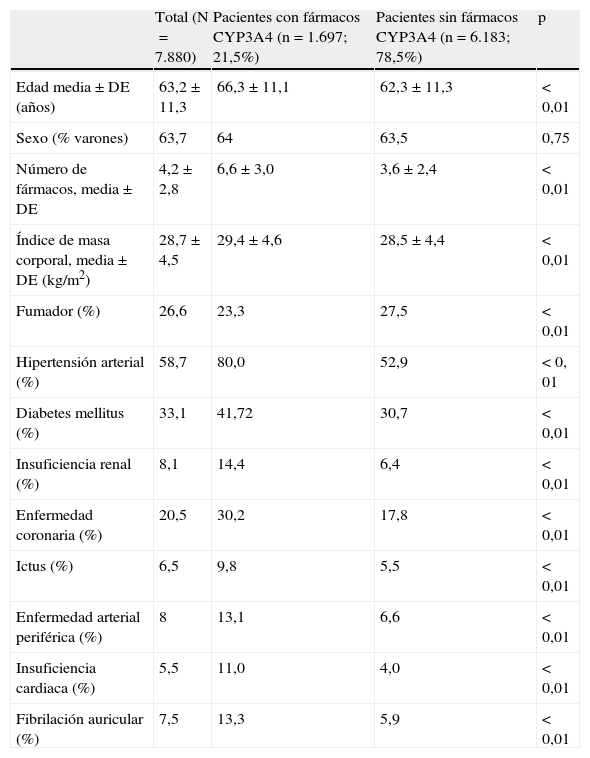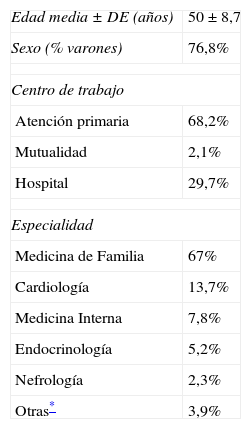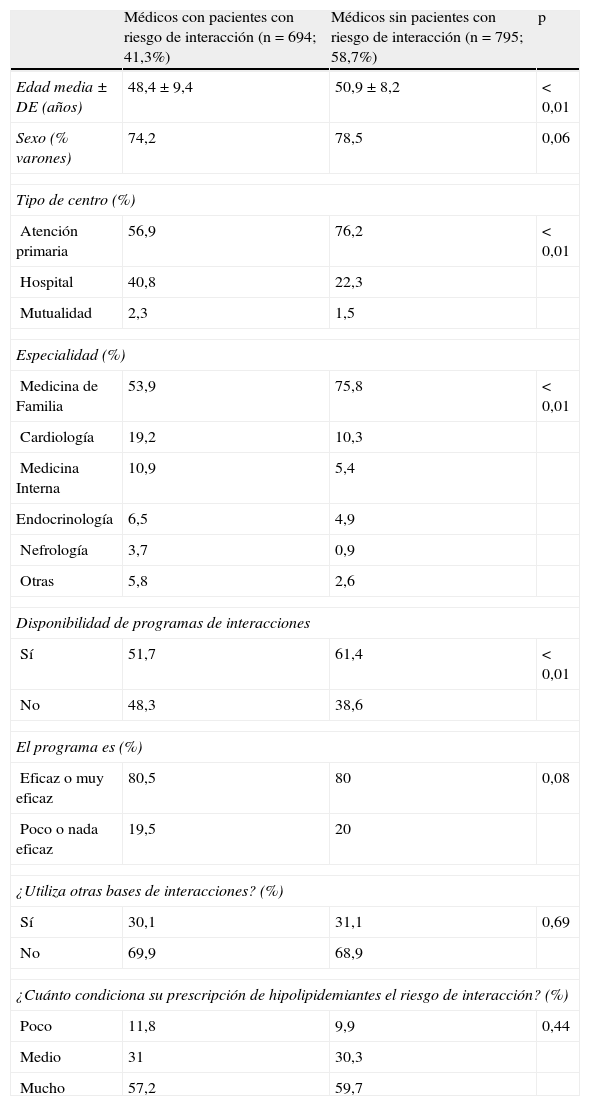Las estatinas son fármacos seguros, pero con un elevado riesgo de interacciones farmacológicas. El objetivo del estudio fue evaluar la prevalencia de interacciones potenciales en la isoenzima 3A4 del citocromo P450 (CYP3A4), en una amplia muestra de pacientes tratados con estatinas, y determinar los factores asociados, tanto del paciente como del médico prescriptor.
Pacientes y métodoEstudio observacional, transversal, de base poblacional. Fueron seleccionados 7.880 sujetos en tratamiento con estatinas. Se recogieron datos referentes a los pacientes y a los 1.681 médicos participantes.
ResultadosUn 59% de los pacientes recibía estatinas metabolizadas por el CYP3A4 y un 21,5% recibía un fármaco, distinto a la estatina, metabolizado por esa misma vía. No hubo diferencias en la frecuencia de utilización de estatinas, metabolizadas o no por el CYP3A4, en función de si los pacientes recibían también fármacos metabolizados por esa misma vía (22 frente a 21%, respectivamente). En total, un 12,9% de los participantes tenía riesgo potencial de interacción. Estos pacientes eran mayores, tomaban más fármacos y tenían una mayor comorbilidad. Un 60% de los médicos refería que la posibilidad de interacción condicionaba mucho su elección de estatina y un 56% disponía de programas informáticos que alertaban de interacción, si bien ninguno de estos aspectos influyó en un menor número de pacientes en riesgo de interacción.
ConclusiónEl porcentaje de pacientes con riesgo de interacción con estatinas es elevado. En general, los médicos no prestan atención a esta posibilidad, a pesar de disponer de programas adecuados para su detección y de alternativas terapéuticas.
Statins are safe but have a significant potential for pharmacological interactions. The objective of the study was to evaluate the prevalence of potential interactions throughout the cytochrome P450 isoenzyme 3A4 (CYP3A4) system in a large sample of statin-treated subjects and to determine which factors, from the patient and the physician, were associated with a higher risk of interactions.
Patients and methodsThis is an observational, cross-over, population study that included 7,880 subjects treated with statins. Both data from patients and from the1,681 participating physicians were recorded and analyzed.
ResultsFifty-nine percent of the participants were receiving a statin metabolized by the CYP3A4, and 21.5% of all participants received a drug, different from a statin, metabolized by the CYP3A4. There were no differences in the frequency of utilization of statins metabolized or not by the CYP3A4 in relation to the simultaneous prescription of drugs metabolized by the same pathway (22 vs. 21%, respectively). Globally, 12.9% of all participants were at risk of an interaction. These patients were older, received a higher number of drugs and had more comorbidity. Sixty percent of the physicians mentioned that the possibility of an interaction greatly conditioned their selection of a particular statin. Likewise, 56% of them had software that alerted of possible interactions. These aspects, however, did not influence the number of patients at risk of interactions.
ConclusionThe proportion of statin-treated patients at risk of interaction is elevated. Physicians do not usually pay attention to this possibility despite having available alert software and therapeutic alternatives.
Artículo
Comprando el artículo el PDF del mismo podrá ser descargado
Precio 19,34 €
Comprar ahora











